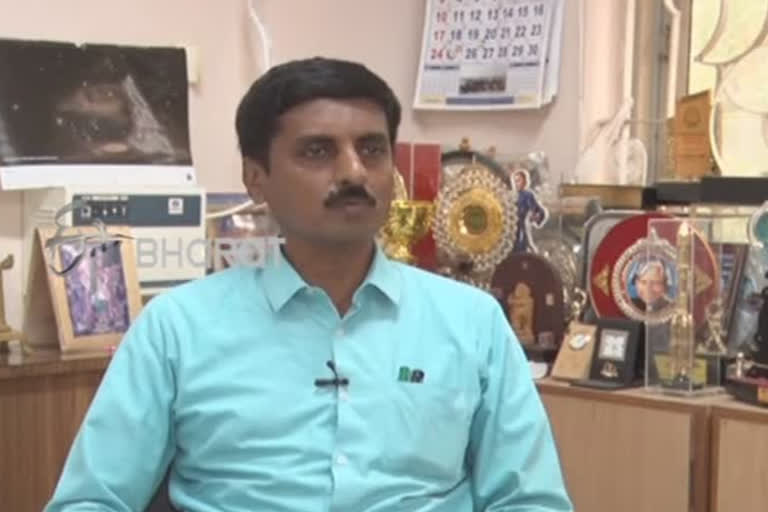Chennai: With solar eclipse just a day away, reports and rumours abound about the rate of Coronavirus infection witnessing a sharp decline once the celestial event is over.
However, the scientific community has discounted such reports saying there is neither any proof nor evidence to substantiate such claims.
As the pandemic shows no sign of losing steam and continue to spread at a fiery pace, ordinary people too tend to believe such palatable rumours.
Dismissing them as baseless, Tamil Nadu Science and Technology Centre Executive Director S Soundararaja Perumal, explains that such reports have not been backed by any verifiable evidence.
Any celestial event is looked upon with anxiety and with the corona pandemic showing no sign of abatement, the solar eclipse is seen as a positive indication. And rumour mills were awash that the solar eclipse would flatten the infection curve bringing relief to the people reeling under a lockdown regime for long.
Speaking to ETV Bharat, Perumal said:"It is a normal astronomical event which has nothing to do with the pandemic. Further, there is no evidence to suggest that the solar eclipse would result in a sharp reduction in the rate of infections."
"Sunday’s eclipse is an annular eclipse which happens when the moon is at its apogee – the farthest point in its slightly elliptical orbit from the earth, when the sun spears slightly bigger in the sky than the moon, he clarified. When the moon passes between the sun and the earth, the disc of the moon covers most of the sun but not its entirety, thus creating a ‘Ring of Fire’ eclipse," he added.
During this type of eclipse, total darkness does not happen, Perumal added saying that it would be a dazzling heavenly wonder to watch, though for a few minutes. The path of the ‘Ring of Fire’ solar eclipse is long as it goes across two continents – Asia and Africa, and 14 countries including China, India and Central Africa.
However, the path of visibility is narrow and the ‘Ring of Fire’ lasts for about 1 minute and 20 seconds. In India, the celestial phenomenon can be viewed in the northern parts of Rajasthan, Haryana, Punjab and Uttarakhand as well as in Chennai, Vellore, Coimbatore, Trichy, Madurai, Kanyakumari and Puducherry in the deep south.
“In Chennai, the solar spectacle will be visible between 10.22 am to 1.41 pm with eclipse reaching its maximum at 11.58 am,” Perumal noted.
The annular eclipse with the ring of fire was last seen in India on January 15, 2010 and on December 26, 2019, he recalled warning that the eclipse should be viewed with the naked eye as it could result in the loss of vision. As such, the spectacle should be viewed with appropriate precautionary measures.
On the safety aspects, he said the celestial event should not be viewed with the naked eye even through a binocular or a telescope. Special arrangements have been made at many places across the state for the public to view the spectacle, he added.
Also Read: Tamil Nadu MP urges centre to induct recent Indian MBBS from Russia and Armenia for COVID-19 work



